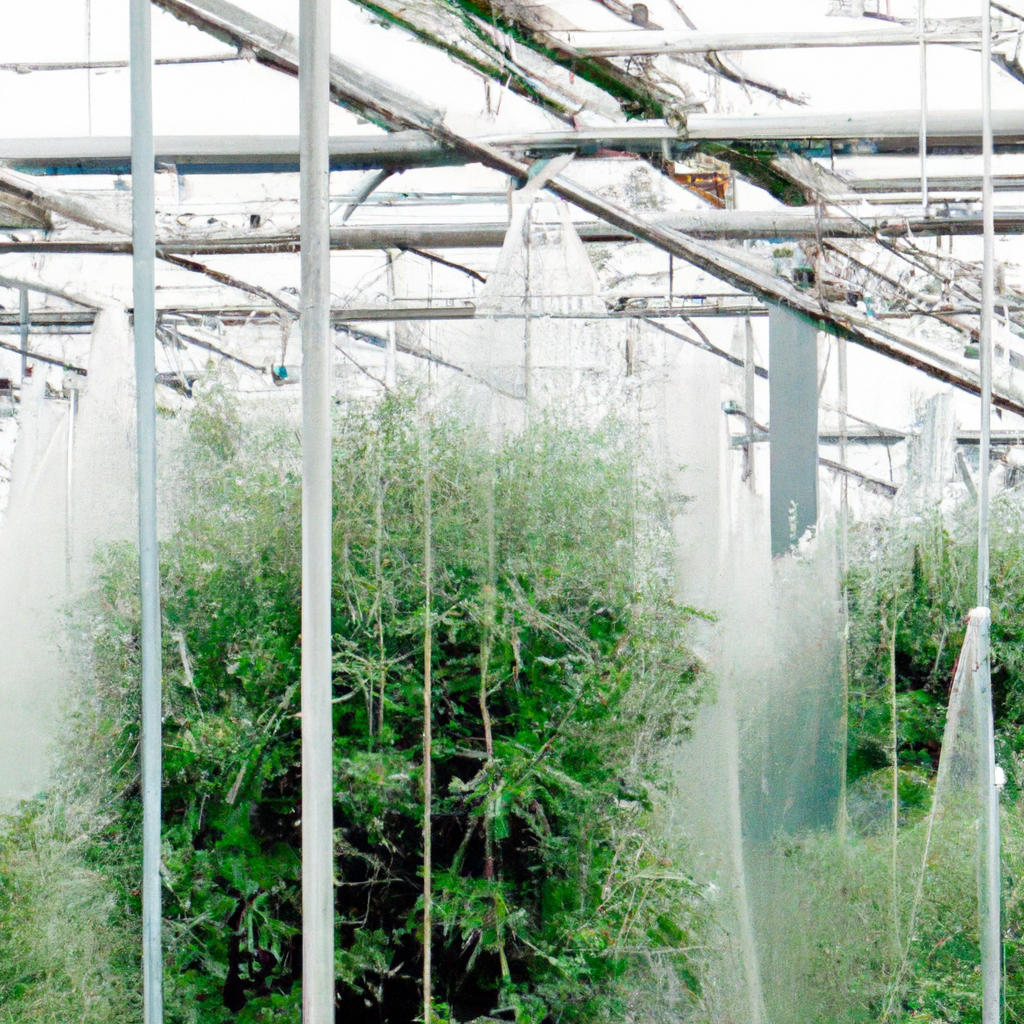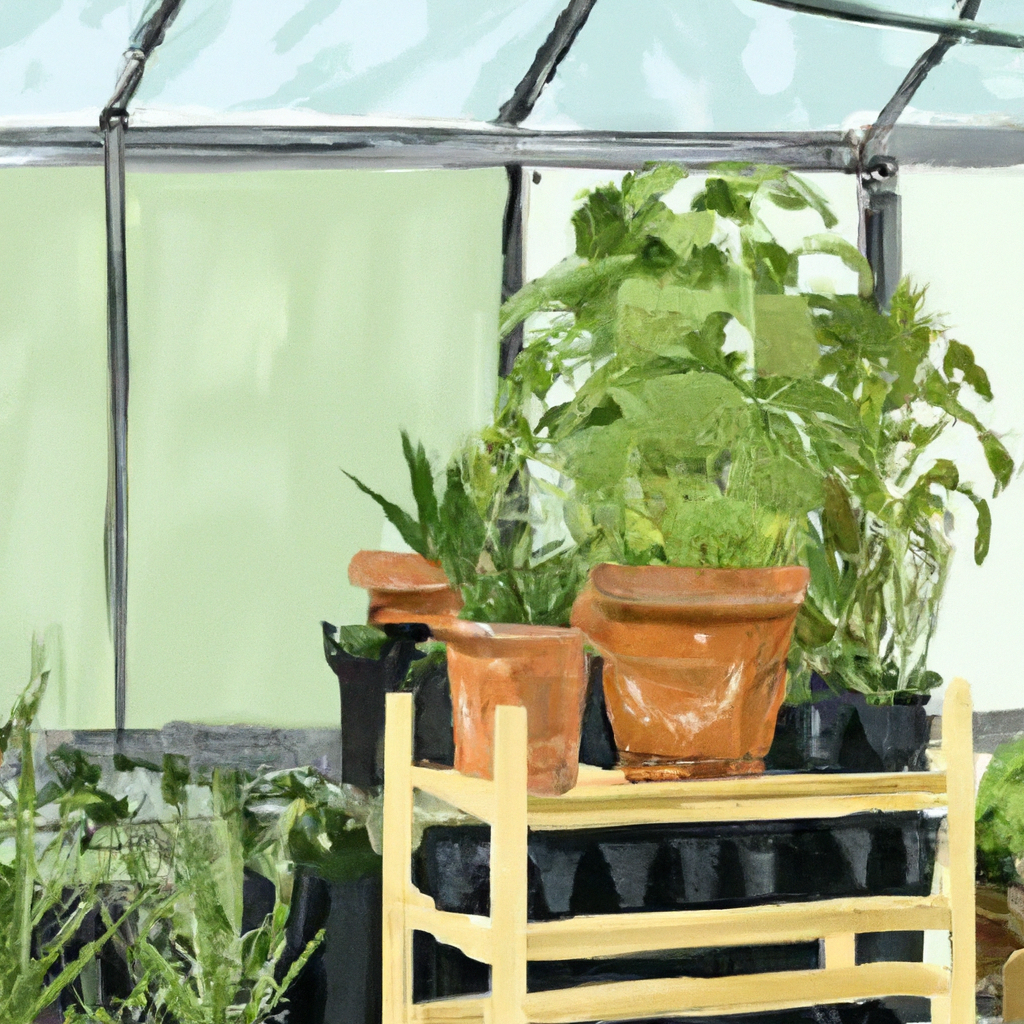
You step into your greenhouse, eager to tend to your beloved plants. But as you look around, you notice unsightly patches of mold and mildew beginning to form on the walls and leaves. Fear not, for there are practical and effective tips to help you combat this common problem. By maintaining proper ventilation, controlling humidity levels, and practicing good hygiene, you can create a healthy and mold-free environment for your plants to thrive in. Say goodbye to mold and mildew, and say hello to a vibrant and beautiful greenhouse.
Tips for Controlling Mold and Mildew in a Greenhouse
When it comes to maintaining a healthy and thriving greenhouse, controlling mold and mildew is crucial. These pesky fungal growths can quickly spread and negatively impact the overall health of your plants. Luckily, there are several effective strategies you can implement to keep mold and mildew at bay. By following these tips and techniques, you can ensure that your greenhouse remains a flourishing and mold-free environment for your plants.
1. Maintain Proper Ventilation
1.1 Keep the greenhouse well-ventilated
Proper ventilation is essential for preventing the buildup of moisture and humidity, which are breeding grounds for mold and mildew. Ensure that your greenhouse has adequate air circulation by installing vents or louvers. These vents will allow fresh air to enter while expelling stale air, reducing the risk of mold and mildew growth.
1.2 Use fans or ventilation systems
In addition to vents, the use of fans or ventilation systems can improve air circulation within your greenhouse. By placing strategically positioned fans, you can ensure proper air movement, preventing stagnant air pockets where mold and mildew can thrive.
1.3 Open doors and windows on sunny days
On sunny days, make sure to open the doors and windows of your greenhouse to allow for natural airflow. This will help in reducing moisture levels and inhibiting the growth of mold and mildew.
1.4 Install vents or louvers for air circulation
Consider installing additional vents or louvers at strategic locations in your greenhouse to enhance air circulation. By properly controlling the airflow, you can minimize the chances of mold and mildew taking hold in your greenhouse.

This image is property of images.pexels.com.
2. Control Humidity Levels
2.1 Monitor and control humidity levels
Regularly monitor the humidity levels within your greenhouse to ensure they remain within an acceptable range. High humidity is a prime condition for mold and mildew growth, so it’s crucial to keep levels in check. Invest in a hygrometer to accurately measure humidity and make adjustments as necessary.
2.2 Use dehumidifiers or humidifiers
If you find that the humidity levels are consistently too high or too low, consider using dehumidifiers or humidifiers to maintain optimal conditions. A dehumidifier will reduce excess moisture in the air, while a humidifier can increase humidity levels if necessary.
2.3 Improve airflow to reduce humidity
Proper airflow not only helps with ventilation but also aids in reducing humidity levels. By implementing the ventilation techniques mentioned earlier and ensuring proper air circulation, you can effectively control and reduce humidity.
2.4 Avoid overwatering plants
Overwatering is a common mistake that can lead to excessive moisture in the greenhouse. Be mindful of the watering needs of your plants and avoid overwatering to prevent unnecessary moisture buildup. Proper watering techniques will go a long way in preventing mold and mildew growth.
3. Maintain Cleanliness
3.1 Regularly clean the greenhouse
Maintaining a clean and tidy greenhouse is essential for preventing the spread of mold and mildew. Regularly clean all surfaces, including walls, floors, and benches. Removing any dust, dirt, or organic matter will eliminate potential habitats for mold and mildew.
3.2 Remove fallen leaves and plant debris
Promptly remove fallen leaves, dead plants, and any other plant debris from the greenhouse. These materials can contribute to the growth of mold and mildew, so it’s important to keep the environment free from such potential sources.
3.3 Properly sanitize gardening tools
Ensure that your gardening tools, such as pruners, shears, and pots, are properly sanitized before using them in the greenhouse. This will help prevent the introduction and spread of mold and mildew on your plants.
3.4 Clean and disinfect pots and trays
Regularly clean and disinfect pots, trays, and any other containers used for planting. This will eliminate any residual mold spores or mildew that may be present, further reducing the chances of the fungi taking hold in your greenhouse.

This image is property of images.pexels.com.
4. Choose Resistant Plant Varieties
4.1 Select mold and mildew-resistant plants
One of the best ways to prevent mold and mildew in your greenhouse is by choosing plant varieties that are naturally resistant to these fungal infections. Research and select plants that have demonstrated resistance to mold and mildew, ensuring a healthier and easier-to-manage greenhouse environment.
4.2 Research and choose suitable varieties
In addition to mold and mildew resistance, consider other factors such as climate suitability, light requirements, and growth habits when selecting plant varieties for your greenhouse. Choosing appropriate varieties will help you create an environment where plants can thrive, reducing the risk of fungal issues.
4.3 Use disease-resistant rootstocks
If you’re growing grafted plants, consider using disease-resistant rootstocks. This can provide an added layer of protection against fungal diseases, including mold and mildew, ensuring the overall health and longevity of your plants.
4.4 Remove infected plants immediately
Even with precautions, some plants may still succumb to mold and mildew. When this happens, it’s important to identify and remove the infected plants as soon as possible to prevent further spread and minimize damage to other plants in the greenhouse.
5. Ensure Proper Watering Techniques
5.1 Water plants at their base
When watering your plants, try to direct the water at the base of the plants, avoiding splashing water onto the leaves whenever possible. Wet foliage can create a favorable environment for mold and mildew growth, so keeping the leaves dry will minimize the risk.
5.2 Avoid excessive watering or water accumulation
Overwatering or allowing water to accumulate in the greenhouse can increase humidity levels and create ideal conditions for mold and mildew growth. Ensure proper drainage and avoid letting water collect in pots or trays.
5.3 Use drip irrigation or soaker hoses
Consider using drip irrigation or soaker hoses to water your plants. These methods deliver water directly to the root system, minimizing water contact with the foliage. By reducing leaf moisture, you can effectively reduce the risk of mold and mildew development.
5.4 Water plants in the morning
Watering plants in the morning allows any excess moisture on the leaves to dry off during the day. This helps prevent prolonged leaf wetness, which can increase the likelihood of mold and mildew development.

This image is property of images.pexels.com.
6. Implement Good Plant Spacing
6.1 Provide adequate spacing between plants
Crowded plants not only compete for light and nutrients but also restrict airflow, creating favorable conditions for mold and mildew growth. Ensure that you provide adequate spacing between your plants, allowing for proper air circulation and reducing the risk of fungal infections.
6.2 Avoid overcrowding
While it may be tempting to fit as many plants as possible into your greenhouse, overcrowding can lead to increased humidity and reduced air circulation. This, in turn, can create an environment conducive to mold and mildew. Practice restraint when planning the layout of your greenhouse to ensure sufficient spacing between plants.
6.3 Prune plants to increase airflow
Regularly prune your plants to remove excess foliage and create better airflow. Removing dense areas or crowded branches will not only help prevent mold and mildew but also improve overall plant health and vigor.
6.4 Use trellises or stakes to support plants
When appropriate, use trellises or stakes to support taller plants. This will prevent plants from sprawling and touching each other, allowing air to circulate freely. Proper staking can also facilitate better exposure to light, reducing the risk of mold and mildew growth.
7. Use Proper Heating and Cooling
7.1 Maintain appropriate temperature levels
Proper temperature control is essential for preventing mold and mildew in a greenhouse. Ensure that your greenhouse remains within the optimal temperature range for your plants. Different plants have varying temperature preferences, so strive to provide the ideal conditions for your specific plant varieties.
7.2 Use thermostats or automatic climate control
Invest in thermostats or automatic climate control systems to help maintain stable temperature conditions within your greenhouse. These devices can regulate heating and cooling, ensuring that temperature fluctuations are minimized, reducing the risk of mold and mildew growth.
7.3 Install insulation for temperature regulation
Consider installing insulation in your greenhouse to prevent extreme temperature fluctuations and aid in maintaining a more stable environment. Proper insulation helps retain heat during cooler periods and provides some level of temperature moderation during hot spells, both of which contribute to mold prevention.
7.4 Use shade cloths or blinds to prevent overheating
During particularly hot periods, protect your plants from excessive heat by using shade cloths or blinds. These simple additions can help reduce the risk of overheating, minimize moisture loss, and create a more comfortable environment for your plants.

8. Apply Preventive Treatments
8.1 Use organic anti-fungal sprays or oils
Organic anti-fungal sprays or oils can be effective in preventing and controlling mold and mildew. Look for products that specifically target these fungal infections and use them in accordance with the manufacturer’s instructions.
8.2 Apply beneficial microbes to suppress mold
Incorporate beneficial microbes into your greenhouse environment to help naturally suppress mold and mildew growth. These beneficial microorganisms can compete with harmful fungi, reducing their ability to establish and thrive.
8.3 Use sulfur-based fungicides as a last resort
If other preventive measures have failed and you’re still battling persistent mold and mildew, sulfur-based fungicides can be used as a last resort. Ensure that you carefully follow the instructions on the product label to avoid any adverse effects on your plants and the environment.
8.4 Follow manufacturer’s instructions
No matter what preventive treatments you choose, it’s important to carefully read and follow the manufacturer’s instructions. Adhering to the recommended application rates and frequency will help ensure the treatments are safe and effective.
9. Monitor and Identify Early Signs
9.1 Regularly inspect plants for mold or mildew
Make it a habit to regularly inspect your plants for any signs of mold or mildew. Early detection is key in preventing the spread of these fungal infections. Look for visible mold growth, discolored leaves, or fuzzy patches, and take immediate action if any suspicious signs are detected.
9.2 Watch out for yellowing leaves or white powdery spots
Yellowing leaves or white powdery spots on the foliage can be indications of mold and mildew. Promptly address these symptoms to prevent further progression and limit the impact on your plants.
9.3 Identify mold or mildew species for targeted treatment
Not all mold and mildew species require the same treatment methods. Take the time to identify the specific type of fungal infection present in your greenhouse. This will allow for more targeted and effective treatment approaches.
9.4 Keep records of observations and treatments
Maintain a record of your observations, treatments applied, and their outcomes. This will help you track the effectiveness of different control methods and make informed decisions in the future. Keeping records will also aid in identifying trends and patterns, allowing for better prevention and management of mold and mildew in your greenhouse.

10. Seek Expert Advice if Needed
10.1 Consult with experienced greenhouse growers
If you find yourself struggling with persistent mold and mildew issues, don’t hesitate to seek advice from experienced greenhouse growers. They may have valuable insights and practical tips to help you overcome the challenges you’re facing.
10.2 Contact plant pathology or horticulture experts
Plant pathology and horticulture experts can provide specialized knowledge and expertise in dealing with mold and mildew. Reach out to these professionals if you need specific guidance on prevention strategies or treatment options tailored to your greenhouse conditions.
10.3 Attend workshops or seminars on mold and mildew control
Educational workshops or seminars focused on mold and mildew control can provide you with valuable information and practical techniques. These events offer opportunities to learn from experts and interact with fellow greenhouse enthusiasts, expanding your knowledge and network.
10.4 Join online gardening forums for advice
Engaging with online gardening forums and communities can be a valuable source of advice and support. Interacting with fellow greenhouse owners and exchanging experiences, tips, and recommendations can help you navigate the challenges of controlling mold and mildew effectively.
By implementing these comprehensive strategies, you can create a healthy and mold-free environment within your greenhouse. Remember, prevention is key, so stay vigilant, adopt good practices, and promptly address any signs of mold or mildew. With proper care and attention, your greenhouse will provide an optimal growing space for your plants, ensuring their long-term health and productivity.

